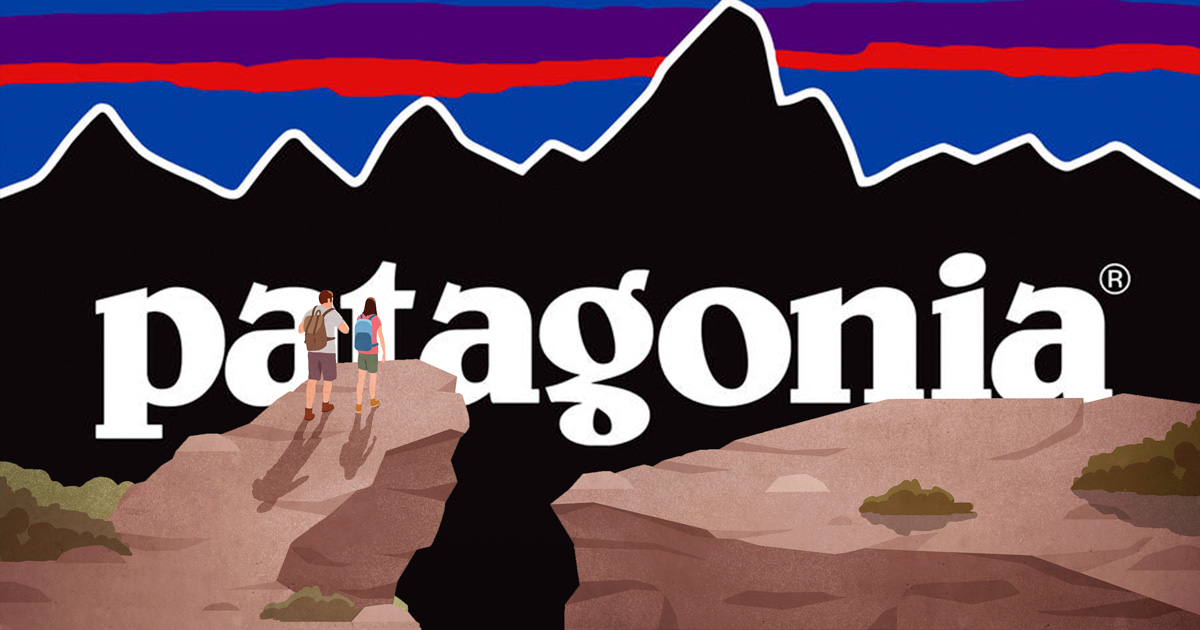FINANCE
How Location Affects Your Average Flood Insurance Cost – What You Need to Consider

Your property’s location and its flood zone are major factors in determining your average NFIP flood insurance premium. Homes in high-risk zones like V and A typically have higher premiums than those in lower-risk areas such as B, C, or X.
Location
Across the country, homeowners can purchase flood insurance through the National Flood Insurance Program (NFIP). The average flood insurance cost is around $700 annually nationally, which can vary depending on your location.
For example, New York homeowners in Nassau County pay the most for a policy since this county has experienced the most flooding events. On the other hand, Seneca County has experienced fewer flood events, so its residents pay less for coverage. You can find the historical flood risk for a specific address by using FEMA’s online tool.
If you live in a high-risk flood zone, the federal government requires that those with a mortgage get an NFIP policy. You can check if your home falls into this category by looking at FEMA’s maps and using a tool. Even if you aren’t in a flood zone, your mortgage company may require that you buy a policy.
If you are in a low-risk zone, asking your insurer if you qualify for the NFIP Preferred Risk Policy is worth asking your insurer. This offers valuable protection at a lower rate than standard policies in high-risk areas. Additionally, you may qualify for additional discounts if your community participates in the NFIP’s Community Rating System. These are only available to some properties, but asking your insurance agent or company about your options is worth the effort.
Elevation
A property’s elevation greatly affects how much its flood insurance will cost. Homes in high-risk areas, such as Special Flood Hazard Areas, are more vulnerable to flooding and require higher premiums than those in moderate-to-low-risk zones.
The best way to determine the risk of your home is by obtaining an elevation certificate, which measures how far the lowest floor of your house is above the Base Flood Elevation (BFE) for your community. Having an EC and providing it to your agent can reduce your rate, especially if you live in a moderate-to-low-risk zone. However, you will need a new one if you change your house, such as raising your lowest floor or adding flood openings to your foundation.
Another great way to keep your rates low is to participate in the NFIP’s Community Rating System, which rewards communities for implementing programs beyond minimum NFIP requirements—discounts through the CRS range from 5% to 45%. You can check if your community is part of the program here.
Ultimately, your average flood insurance costs will depend on some factors, including location, coverage levels, and deductible. Be sure to assess the potential risks of your home before purchasing, and talk with an independent insurance agent to find the best rate for you.
Flood Risk
If you live in a floodplain or an area prone to flooding, your insurance will be more expensive. The same goes for rocky, sandy, or other hard terrain locations that can slow water flow and cause flash floods.
Another factor that influences the cost of flood insurance is your community’s history with flooding and the risk level for your specific property. FEMA’s flood maps are constantly changing, and a home previously in a minimal-risk zone could become a high-risk property when the new map is drawn.
Homeowners outside of zones where flood insurance is required filed 40% of NFIP claims and one-third of federal disaster assistance between 2017 and 2019. That’s why it’s important to keep an eye on your home’s location and the risk level in your neighborhood.
It’s also worth remembering that the amount you pay for a policy will determine how much you can claim. Most policies have a minimum deductible of $1,250, but you can choose a higher deductible to lower your premium. Just make sure you factor in the value of your belongings when deciding on a deductible. In general, older homes are more expensive to insure than newer ones. This is because older structures are more challenging to protect against the impact of flooding and may require more extensive repairs when a hits.
Community Rating System
Before Risk Rating 2.0, NFIP rates were primarily determined by which flood zone you lived in, with a higher risk area resulting in a higher premium. However, this method was unfair because it needed to consider the costs of rebuilding a property, leading to many homeowners needing more money for insurance.
That is why the NFIP now offers a Community Rating System (CRS) program, where communities can earn discounts on their flood insurance for taking proactive steps to reduce their flood risks. These efforts are rewarded with a CRS class rating ranging from entry-level class 10 to a top-tier class 1. Each step up the CRS class ranking increases the discount on your flood insurance policy.
Using newer, more accurate maps that consider the depth of flooding and how much the land slopes, FEMA has better redesigned the NFIP’s rating strategy to reflect the actual risk of your home or business. The rate factors that are now used include:
- The flood frequency.
- The type of flood risk in your area (river overflow, storm surge, heavy rainfall).
- Your distance to a water source.
- Your home’s elevation.
The best way to keep your flood insurance costs low is to live in a low-to-moderate-risk flood zone, significantly reducing the likelihood of you having to file a claim. However, if you cannot move to a low-risk area, consider getting an Elevation Certificate and submitting it to your NFIP agent to see how the new rating factors will affect your flood insurance premium.
FINANCE
5StarsStocks.com Nickel: Investment Insights and Market Trends

5StarsStocks.com Nickel is an investment information platform that focuses on commodities like nickel. The website provides insights, trends, and stock recommendations for those interested in this growing market.
Nickel has become an important metal in modern industries. Its demand has increased significantly due to its essential role in manufacturing, especially in electric vehicle (EV) batteries and stainless steel production.
Investors looking for opportunities in the commodity market often consider nickel due to its increasing value. 5StarsStocks.com Nickel aims to guide investors by providing market analysis, forecasts, and potential investment options.
The platform highlights why nickel is a valuable asset. With rising technological advancements and demand in the renewable energy sector, nickel has become a promising investment.
By staying updated with market trends and industry shifts, 5StarsStocks.com Nickel helps investors make informed decisions. However, careful evaluation of all available information is necessary before investing.
5StarsStocks.com Nickel: A Unique Investment Platform
5StarsStocks.com Nickel is a dedicated resource for investors looking to explore the nickel market. It provides real-time insights, market trends, and investment recommendations for those interested in nickel-related stocks. The platform analyzes the performance of companies involved in nickel mining, processing, and battery production, helping investors make informed financial decisions.
As nickel demand continues to rise, 5StarsStocks.com Nickel highlights the key factors affecting its value, such as supply chain trends, industrial usage, and technological advancements. By offering accessible and easy-to-understand investment strategies, the platform aims to guide both beginner and experienced investors in navigating the dynamic nickel market.
The Importance of Nickel in Global Markets
Nickel is a highly versatile metal used in various industries. It is primarily used in stainless steel production, which accounts for nearly 70% of global nickel consumption. This makes it an essential material for construction, manufacturing, and heavy industries.
The growing shift towards electric vehicles (EVs) has further increased the demand for nickel. The metal is a key component in lithium-ion batteries, which are widely used in EVs due to their high energy efficiency and durability.
Apart from EV batteries, nickel plays a significant role in renewable energy storage systems. These systems are crucial for sustainable energy solutions, ensuring long-term energy supply and reducing dependence on fossil fuels.
Major Uses of Nickel in Industries:
- Stainless steel production – Strong, corrosion-resistant metal for construction.
- Battery manufacturing – Essential for EVs and energy storage.
- Aerospace applications – Used in jet engines and turbine blades.
- Renewable energy – Helps in the storage of solar and wind energy.
Global policies supporting sustainability are also driving nickel’s demand. Countries are increasingly investing in eco-friendly alternatives, making nickel a key player in the green economy.
5StarsStocks.com Approach to Nickel Investments
5StarsStocks.com Nickel provides investors with valuable market insights. The platform analyzes industry trends, production statistics, and investment risks to help users make smart financial decisions.
The website features stock recommendations based on extensive research. It focuses on companies involved in nickel mining, processing, and battery manufacturing, ensuring investors are aware of profitable opportunities.
In addition to stock recommendations, the platform shares investment strategies. It highlights when to buy or sell nickel-related stocks, considering factors like global demand, price fluctuations, and economic policies.
A key advantage of 5StarsStocks.com Nickel is its ability to provide up-to-date market analysis. By tracking industry developments, the platform ensures that investors have real-time information to make profitable moves.
While 5StarsStocks.com Nickel provides extensive data, investors should also conduct independent research. Relying solely on one source for investment decisions can be risky, so cross-referencing with multiple sources is recommended.
Key Factors Affecting Nickel Prices
Nickel prices fluctuate based on supply and demand. Global mining activities, production levels, and geopolitical factors influence its value. Countries like Indonesia, Russia, and the Philippines are among the largest nickel producers.
Economic conditions also play a crucial role. When industries experience growth, the demand for nickel rises. However, during economic downturns, demand decreases, leading to price drops.
Technological advancements in battery production impact nickel’s market. As more companies develop efficient and cost-effective EV batteries, nickel demand is expected to increase.
Nickel Production by Major Countries (2024 Estimate)
| Country | Annual Production (Metric Tons) |
| Indonesia | 1,600,000 |
| Philippines | 400,000 |
| Russia | 250,000 |
| Canada | 150,000 |
| Australia | 140,000 |
Global trade policies and environmental regulations also affect nickel prices. Restrictions on mining and metal exports can lead to price surges, while increased production can stabilize or reduce costs.
Evaluating 5StarsStocks.com as a Source for Nickel Investments
5StarsStocks.com Nickel provides detailed stock insights, which can be helpful for investors. The platform covers market trends, forecasts, and stock recommendations to assist users in making well-informed choices.
One of the key benefits of the website is its user-friendly approach. Investors, whether beginners or experienced traders, can easily understand market trends and investment options without complex financial jargon.
However, some concerns exist about the reliability of certain stock recommendations. It is important to verify any investment suggestions from multiple trusted sources before making financial commitments.
Pros and Cons of Using 5StarsStocks.com Nickel:
Pros:
- Regular updates on nickel stocks.
- Easy-to-understand investment strategies.
- Covers market trends and future predictions.
Cons:
- Not all stock recommendations may be unbiased.
- Investors should cross-check data with other sources.
Using a combination of platforms for research ensures better investment decisions. While 5StarsStocks.com Nickel provides useful information, investors must stay cautious and diversify their sources of market analysis.
Final Thoughts: Should You Invest in Nickel?
Nickel has become a crucial commodity, especially with the rise of electric vehicles and renewable energy. Its demand is expected to grow, making it an attractive investment opportunity for long-term investors.
5StarsStocks.com Nickel provides valuable insights into the market, helping investors understand stock performance and industry trends. However, relying solely on one source for investment decisions is not advisable.
Investing in nickel comes with risks, as price fluctuations can occur due to economic and geopolitical factors. Diversifying investments and keeping up with market trends can help mitigate these risks.
For those interested in the nickel market, staying updated with multiple financial platforms, including 5StarsStocks.com Nickel, is recommended. A well-researched approach will increase the chances of making profitable investment decisions.
FAQs
What is 5StarsStocks.com Nickel?
5StarsStocks.com Nickel is an investment platform that provides insights, stock analysis, and market trends related to nickel investments.
Why is nickel a good investment?
Nickel is in high demand for electric vehicle (EV) batteries, stainless steel production, and renewable energy storage, making it a valuable long-term asset.
How does 5StarsStocks.com Nickel help investors?
The platform offers stock recommendations, price forecasts, and industry analysis to assist investors in making informed financial decisions.
What factors influence nickel prices?
Nickel prices fluctuate due to global supply and demand, mining output, trade policies, and advancements in battery technology.
Should I rely only on 5StarsStocks.com Nickel for investment advice?
While it provides useful insights, it’s best to cross-check information with other trusted sources before making investment decisions.
FINANCE
Price Charalabush: A Smart Pricing Strategy for Modern Businesses

Price Charalabush is a unique pricing approach that aims to balance cost efficiency with market demands. It is designed to help businesses optimize their pricing strategies while considering economic and competitive factors.
The term “Price Charalabush” has gained attention in recent years, although its exact origins remain uncertain. Some experts suggest it combines traditional pricing models with innovative market insights.
Understanding price charalabush is crucial for businesses looking to stay competitive. It provides a structured method to analyze pricing patterns and adjust strategies accordingly.
Unlike conventional pricing, price charalabush focuses on real-time data and adaptive strategies. This ensures companies can respond quickly to market shifts and consumer behavior.
Key Features of Price Charalabush
Price Charalabush incorporates various factors such as demand elasticity, competitor pricing, and consumer perception. This makes it a dynamic approach to pricing in fluctuating markets.
One of the key aspects is its ability to adjust prices based on real-time analytics. Businesses using this model can react to economic changes faster than those relying on fixed pricing structures.
It also emphasizes customer value rather than just cost-based pricing. By understanding consumer behavior, businesses can set prices that maximize both sales and customer satisfaction.
Key Features of Price Charalabush:
- Market-driven pricing adjustments
- Real-time analytics for better decision-making
- Focus on consumer value and demand trends
Economic and Business Relevance
Price charalabush plays a significant role in business profitability. Companies using this pricing model often achieve better revenue optimization compared to traditional pricing strategies.
In economic terms, it helps stabilize supply and demand by preventing extreme price fluctuations. Businesses can adjust their prices strategically to avoid losses during economic downturns.
For consumers, price charalabush creates a fair pricing structure. It ensures prices remain competitive while still providing good value for products and services.
Many industries, including e-commerce and retail, have adopted this model to enhance their pricing efficiency. It helps businesses remain adaptable in a constantly changing economic landscape.
Application in Various Industries
Retail businesses benefit from price charalabush by adjusting prices based on seasonal trends and consumer demand. This helps them clear stock efficiently while maintaining profitability.
The financial sector applies this strategy in stock market pricing. Investors use dynamic pricing insights to make informed decisions based on market fluctuations.
E-commerce platforms implement price charalabush to stay competitive. They analyze customer behavior and competitor pricing to set optimal rates for their products.
In sustainable industries, this pricing model ensures affordability while promoting environmentally friendly products. It helps businesses balance ethical production costs with market demand.
Industry Application Table:
| Industry | Use of Price Charalabush |
| Retail | Adjusting prices for seasonal demand |
| Finance | Stock market pricing strategies |
| E-commerce | Competitor price analysis |
| Sustainability | Pricing eco-friendly products fairly |
Challenges and Limitations
Despite its benefits, price charalabush is not without challenges. One major issue is the complexity of implementing real-time pricing adjustments, which requires advanced data analytics tools.
Another challenge is consumer perception. If customers notice frequent price changes, they may lose trust in the pricing strategy and become hesitant to make purchases.
Businesses must also ensure compliance with pricing regulations. Unregulated price changes can lead to legal issues, especially in highly controlled industries.
However, these challenges can be managed through transparency and strategic planning. By using automated pricing tools and clear communication, businesses can make price charalabush work effectively.
Future of Price Charalabush
The future of price charalabush is promising as technology continues to evolve. Artificial intelligence (AI) and big data analytics will enhance its accuracy and efficiency.
More industries are expected to adopt this model, particularly in digital services and online marketplaces. Personalized pricing will become more common, benefiting both businesses and consumers.
Regulations on dynamic pricing will likely increase. Governments may introduce policies to ensure fair and ethical pricing practices across industries.
As competition grows, companies that effectively implement price charalabush will have a strong advantage. Those that fail to adapt may struggle to remain relevant in the evolving market.
Conclusion
Price charalabush is a valuable pricing model that helps businesses stay competitive while meeting consumer needs. It balances real-time market trends with strategic pricing decisions.
Although it comes with challenges, the benefits of improved revenue optimization and market adaptability make it a worthwhile strategy. Businesses must leverage technology to implement this model effectively.
As industries continue to evolve, price charalabush will play a significant role in shaping future pricing strategies. Companies should stay informed and adjust their approaches accordingly.
Ultimately, understanding price charalabush is essential for businesses aiming for long-term success in a dynamic economic landscape.
FAQs
What is Price Charalabush?
Price Charalabush is a dynamic pricing strategy that adjusts prices based on real-time market conditions, demand, and competitor pricing.
How does Price Charalabush benefit businesses?
It helps businesses optimize revenue, stay competitive, and adapt pricing strategies quickly to market fluctuations and consumer behavior.
Is Price Charalabush suitable for all industries?
Yes, it can be applied in retail, finance, e-commerce, and sustainability, but industries with strict pricing regulations may need adjustments.
What are the main challenges of using Price Charalabush?
Challenges include the complexity of implementation, consumer trust issues, and ensuring compliance with pricing laws and regulations.
Will AI and technology improve Price Charalabush?
Yes, AI and big data analytics will enhance accuracy, efficiency, and personalized pricing for businesses adopting this model.
BUSINESS
KOKITOTO: Destinasi Togel 4D dan Slot Online yang Terpercaya
Dalam dunia permainan daring, menemukan platform yang aman, menarik, dan menguntungkan adalah hal yang krusial. Salah satu nama yang telah membuktikan kualitasnya adalah KOKITOTO, sebuah situs yang menggabungkan permainan togel 4D dan slot online dengan layanan profesional serta fitur terbaik.
Jika Anda sedang mencari pengalaman bermain yang menyenangkan sekaligus menguntungkan, KOKI TOTO adalah tempat yang tepat untuk Anda.
Apa yang Membuat KOKITOTO Berbeda?
KOKITOTO hadir dengan berbagai keunggulan yang menjadikannya pilihan utama bagi pemain togel dan slot online. Berikut adalah alasan mengapa banyak orang mempercayakan pengalaman bermain mereka di KOKI TOTO:
Permainan Lengkap dan Berkualitas
KOKITOTO menawarkan berbagai jenis permainan togel dengan pasaran populer seperti Hongkong, Singapura, dan Sydney. Untuk slot online, tersedia ratusan permainan dari provider ternama dengan tema menarik dan fitur modern.
Keamanan Terjamin
Sistem keamanan di KOKITOTO menggunakan teknologi enkripsi terkini, memastikan data pribadi dan transaksi pemain tetap aman.
Bonus dan Promosi Menarik
Pemain baru akan disambut dengan bonus pendaftaran. Promo mingguan seperti cashback dan free spins siap meningkatkan peluang Anda untuk menang.
Pelayanan Pelanggan 24/7
Tim dukungan pelanggan yang responsif siap membantu kapan saja, memastikan setiap permasalahan terselesaikan dengan cepat.
Transaksi Cepat dan Mudah
Dengan metode pembayaran yang lengkap, proses deposit dan penarikan berjalan mulus tanpa hambatan.
Sensasi Bermain Togel 4D di KOKITOTO
Situs Togel 4D menjadi salah satu permainan andalan di KOKITOTO. Platform ini menawarkan pengalaman bermain yang praktis dengan peluang kemenangan besar.
Fitur unggulan togel di KOKI TOTO:
• Pasaran Lengkap: Pilihan pasaran togel dari seluruh dunia tersedia, memberikan fleksibilitas bagi pemain.
• Data Keluaran Terpercaya: Semua hasil undian diperbarui secara real-time dan transparan.
• Taruhan Variatif: Dari 2D hingga 4D, tersedia berbagai jenis taruhan yang dapat disesuaikan dengan kebutuhan Anda.
Hiburan Tanpa Batas dengan Slot Online
Bagi penggemar slot, KOKITOTO menawarkan pilihan permainan dengan grafis memukau dan fitur menarik. Dari tema klasik hingga modern, setiap permainan dirancang untuk memberikan pengalaman bermain yang mendalam.
Keunggulan slot online di KOKI TOTO:
• Jackpot Progresif: Kesempatan memenangkan hadiah besar yang terus bertambah setiap waktu.
• Putaran Bonus: Banyak permainan yang menawarkan putaran gratis dan fitur khusus lainnya.
• RTP Tinggi: Peluang menang lebih besar dengan persentase Return to Player yang menarik.
Cara Bergabung di KOKITOTO
Mendaftar di KOKITOTO sangat mudah dan cepat. Berikut langkah-langkahnya:
Kunjungi Situs Resmi KOKITOTO
Akses platform melalui browser Anda.
Isi Formulir Pendaftaran
Masukkan data pribadi seperti nama pengguna, email, dan nomor telepon.
Deposit Saldo
Gunakan metode pembayaran yang tersedia untuk mengisi saldo Anda.
Mulai Bermain
Jelajahi permainan favorit Anda dan nikmati keseruannya.
Tips Bermain di KOKITOTO untuk Pemain Baru
Untuk memastikan pengalaman bermain Anda optimal, berikut beberapa tips yang bisa diterapkan:
Pelajari Aturan Permainan
Sebelum mulai, pelajari terlebih dahulu aturan dan strategi permainan yang akan dimainkan.
Manfaatkan Bonus
Gunakan bonus dan promosi untuk meningkatkan saldo bermain Anda.
Kelola Anggaran
Tetapkan batas harian untuk bermain dan jangan melebihi anggaran yang telah Anda siapkan.
Main dengan Santai
Bermain dengan pikiran tenang membantu Anda membuat keputusan yang lebih baik.
Mengapa KOKITOTO Pilihan Tepat untuk Anda?
KOKITOTO tidak hanya menawarkan hiburan, tetapi juga komitmen terhadap kepercayaan dan kenyamanan pemain. Dengan sistem yang adil, layanan profesional, dan berbagai fitur menarik, platform ini menjadi pilihan ideal bagi semua pemain, baik pemula maupun yang sudah berpengalaman.
Kesimpulan
Jika Anda mencari platform permainan daring yang terpercaya, aman, dan penuh keseruan, KOKI TOTO adalah jawabannya. Dengan layanan lengkap, bonus melimpah, dan peluang menang besar, KOKI TOTO siap memberikan pengalaman bermain yang tak terlupakan.
Bergabunglah sekarang dan buktikan sendiri sensasi bermain di KOKI TOTO. Keberuntungan besar mungkin sedang menunggu Anda hari ini!
-

 L,IFESTYLE1 year ago
L,IFESTYLE1 year agoExploring the Heart of Iowa City Downtown District
-

 SPORTS2 years ago
SPORTS2 years agoclub america vs deportivo toluca f.c. timeline
-
CRYPTO2 years ago
Features of Liquidity Providers and Differences Between Them
-

 BUSINESS2 years ago
BUSINESS2 years agoThe Evolution of the Patagonia Logo: A Look at the Brand’s Iconic Emblem
-

 CRYPTO2 years ago
CRYPTO2 years agoThe Essential Cryptocurrency Laws By State
-

 TECH2 years ago
TECH2 years agoBuild Your Email Marketing Contact
-

 HEALTH4 months ago
HEALTH4 months agoProstavive Colibrim: A Natural Prostate Health Supplement
-

 TECH2 years ago
TECH2 years agoMaximizing Your Pixel 6a’s Wireless Charging Performance: Tips and Tricks









